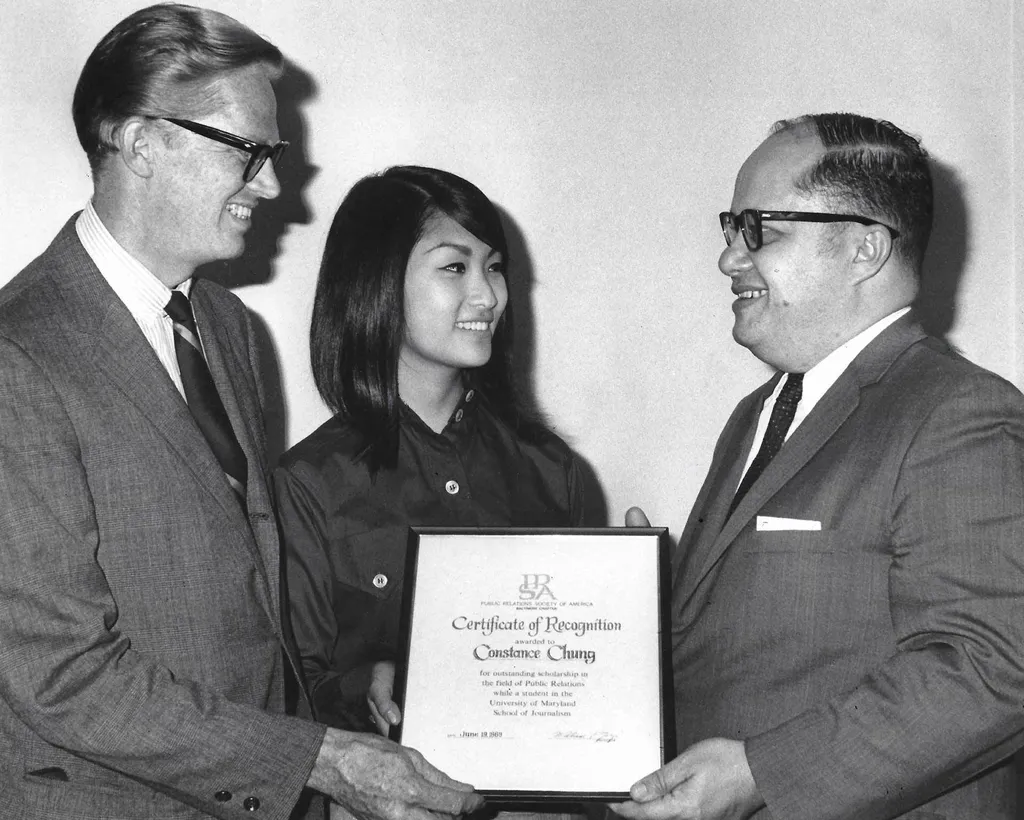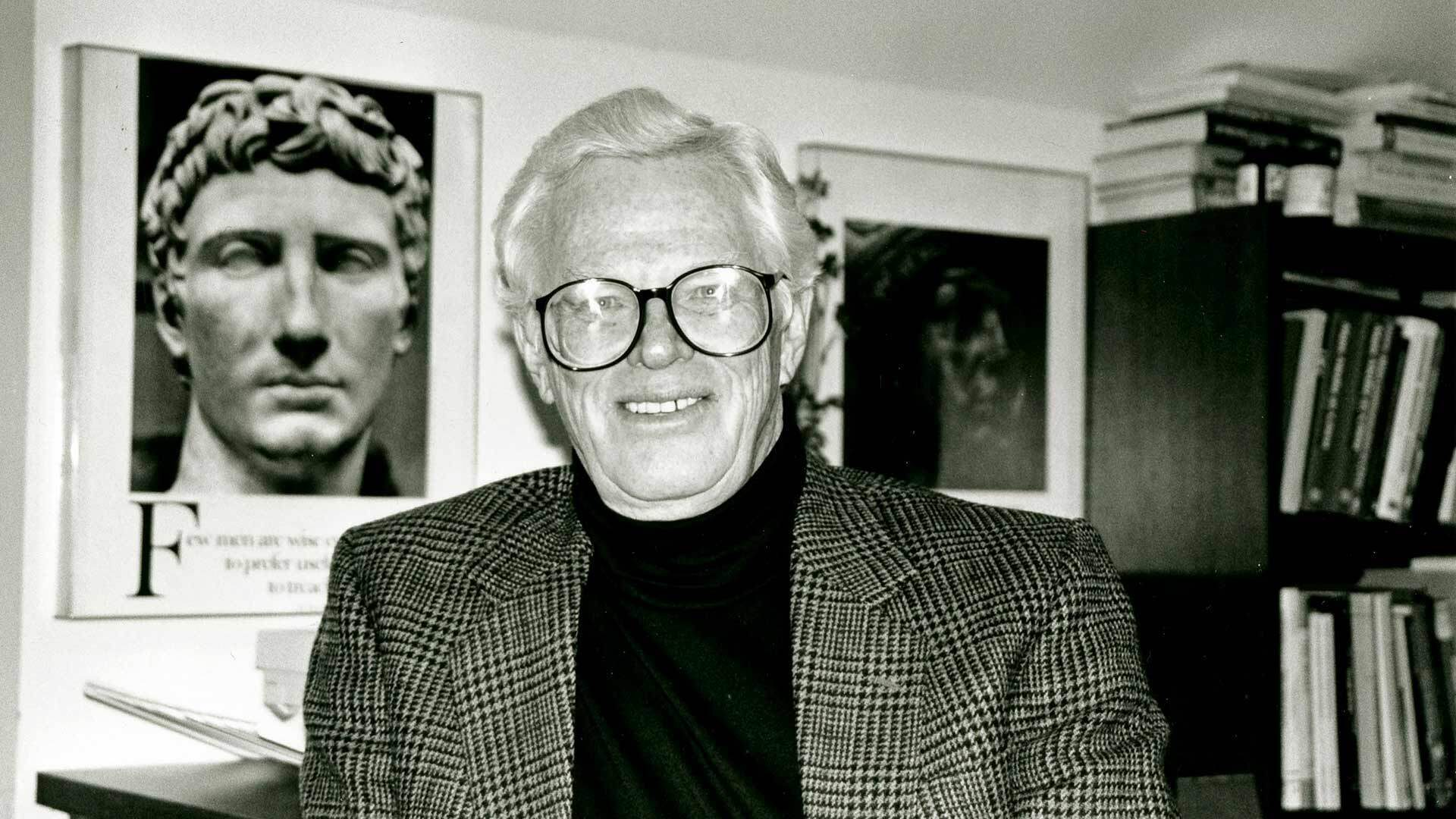- August 08, 2023
- By Philip Merrill College of Journalism Staff
Ray Eldon Hiebert M.A. ’61, Ph.D. ’62, founding dean of the University of Maryland’s Philip Merrill College of Journalism and an expert on international communication, died Aug. 5 in Carmel, Calif. He was 91.
The university recruited him in 1968 to revamp its journalism department, and after four years of progress, the program was elevated to college status with Hiebert as dean. In the following years, he concentrated on working with graduate students and served as chair or committee member of dozens of master’s theses and doctoral dissertations. He also continued a prolific writing and editing career that included textbooks, biographies and the founding of a prominent academic journal.
Hiebert continued as dean until 1980 and remained on the faculty until his retirement in 1998, teaching for another 10 years on a part-time basis. He was inducted into the Merrill College Hall of Fame in 2023.

"Ray was critical to getting Merrill College to where it is today, and he remained involved, interested and passionate about its mission throughout his life," Merrill College Dean Rafael Lorente said. "I remember Ray as someone who cared deeply about teaching and positioning graduate students to be the journalism educators of the future."
UMD might have lost its journalism program altogether without Hiebert’s work, said Maurine Beasley, a professor emerita of journalism. When he stepped in, proposals were afoot to move journalism education to another campus in the University System of Maryland, which would have sacrificed the college’s proximity to one of the world’s most dynamic journalism markets.
“He recognized the need to have a journalism program that allied itself with the world of Washington media,” she said. “Ray, the founding dean of our college, always was forward-looking.”
Hiebert was also an early backer of research into women’s roles and opportunities in the media, and in a tribute submitted to Merrill College, Beasley said she in part owes her career to that groundbreaking support.
Hiebert’s own career in journalism began with a paper route at age 10 in California’s Central Valley, delivering The Bakersfield Californian and the Los Angeles Times, followed by high school sports coverage for the Los Angeles Examiner while still in high school himself.
After graduating from Stanford University and being drafted during the waning days of the Korean War, Hiebert worked at publications including the Long Island Press while completing a master’s degree at Columbia University’s Graduate School of Journalism. He would later earn master’s and doctoral degrees in American civilization from the UMD College of Arts and Humanities, as well.
Hiebert left full-time journalism for teaching, and at age 26, joined the faculty at American University, where he was soon appointed chairman of the department of journalism and broadcasting while also working part-time at NBC News. With a grant from the Kiplinger Foundation, Hiebert created the Washington Journalism Center, a program bringing promising young journalists to Washington for a semester of seminars with newsmakers and media internships.
Years later while serving as Merrill College dean, the U.S. State Department invited him in 1976 to give lectures on freedom of the press in 13 African countries, which he considered a life-changing experience. He directed Voice of America’s summer journalism fellowship program for developing nations’ journalists and broadcasters, taught objective journalism techniques as director of UMD’s American Journalism Center in Budapest and worked to develop American-style journalism education in China.
Hiebert was author, co-author or editor of more than 25 books, including one of the first textbooks to deal comprehensively with all media, and of “Courtier to the Crowd,” a biography of public relations pioneer Ivy Lee. He was also the founding editor of the Public Relations Review, a widely read social science journal.
In retirement, Hiebert returned home to California. He is survived by his wife of 37 years, Sheila Gibbons Hiebert; four children from his marriage to Roselyn Hiebert: David, Steven and Douglas Hiebert, and Emily Townsend; six grandchildren; two great-grandchildren and numerous nieces and nephews. He is also fondly remembered by many students he encouraged over his 50-year career in education.
Beyond leaving a lasting impact on the fields of public relations scholarship and international communications, “As his student, I was fortunate to experience firsthand his genuine care and unwavering support,” said Yi-Hui Christine Huang, head and chair professor of media and communication at the City University of Hong Kong. “Throughout my academic journey, he served as a mentor, guiding and nurturing me with his wisdom and insight that I will forever treasure.”
Topics
People